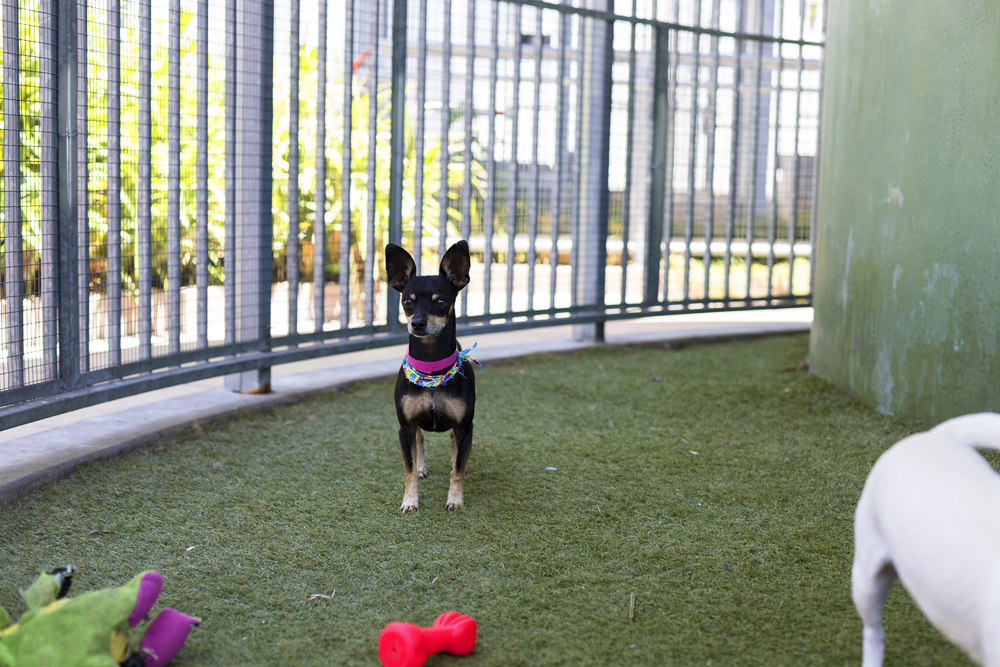Pet Care
Do You Speak Dog?
Ever wonder what a dog is saying? View this fun and informative video to learn how to safely approach and meet a dog, and get a better understanding of their body language so we know what our furry four-legged friends are telling us, like when they would prefer not to socialize and meet you, and when they are ready to play. Then take the quiz to see if you can speak dog.
Dog Personalities by Breed
When adding a new dog or cat to your family, there are many practicalities to consider. Would you like a new furry baby who requires frequent meals and lots of training, or are you looking for a mature pet whose personality is known to the staff and volunteers, whose size and appearance will not be a surprise?
Things to Consider When Adding a Dog to Your Family
Barking Dog
Dogs communicate by using at least ten different types of sound, ranging from whimpering to growling. By varying the tone of these sounds, they can express no less than 39 different meanings. The sound that usually is successful in getting the most response is barking. Usually barking means that your dog is in need of something-she/he may be bored (especially in a one dog household with the guardians gone a lot of the time,) lack of exercise, lack of companionship from their own species or lack of human attention, anxiety, fear and stress. Barking is normal and the way that your dog communicates, however, when problems such as escaping and excessive barking result in neighborhood disputes, your dog’s barking problem can become a “people problem.” If your dog’s barking has created neighborhood tension, it’s a good idea to discuss the problem with your neighbors. It is perfectly normal and reasonable for dogs to bark from time to time, just as children make noise when they play outside. However, continual barking for long periods of time is a sign that your dog has a problem that needs to be addressed.
Additional barking dog information
Digging Dog
However, dogs don’t dig out of spite, revenge or a desire to destroy your yard. Finding 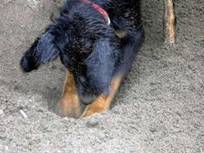 ways to make the area where the dog digs unappealing may be effective, however, it’s likely that he’ll just begin digging in other locations or display other unacceptable behavior, such as chewing or barking. A more effective approach is to address the cause of the digging, rather than creating location aversions.
ways to make the area where the dog digs unappealing may be effective, however, it’s likely that he’ll just begin digging in other locations or display other unacceptable behavior, such as chewing or barking. A more effective approach is to address the cause of the digging, rather than creating location aversions.
Dog digging recommendations
Selecting a Dog Trainer
Here is some information about finding a good dog trainer for you and your dog. However, if you only read one paragraph, here’s the short version.
Ask to visit a class you may be considering and go without your dog to observe. Watch the class and see how the guardians and dogs are interacting. Are they having fun? Are the people interacting positively with their dogs? Is the overall class a positive experience? If you are uncomfortable with what you observe find a different trainer. Training styles vary and different dogs may respond to different methods, but excessive force is not okay.
Finding a good dog trainer can be the difference between successfully training your dog and having you and your dog frustrated by the training process. However, finding a good dog trainer is not always as easy as it seems. While most dog trainers may be very good, there are some factors to consider which include your training goals, the specific needs of your dog as well as the amount of time you can devote to training. It may take a great deal of time and effort to find a good dog trainer but it does not have to be impossible. The following are a few of the methods a dog owner can use to select a well qualified trainer to assist him in training his dog.
One of the easiest ways to narrow your search down to a few dog trainers is to ask for recommendations from friends or family members. These opinions might be especially useful when they come from friends or family members who share the same training goals as you. For example, if you wish to compete in obedience trials with your dog and have a friend or family member who has enjoyed a great deal of success in the obedience ring with his dog, you might want to consider the trainer with which he works. Or if you have a dog with a specific issue, such as aggressiveness or timidity, you might consider consulting a friend or family member who worked with a dog trainer to help his dog overcome these issues. Asking for recommendations from friends or family members is an ideal option because they are very likely to provide you with a candid evaluation of the trainer’s abilities, training techniques and professionalism.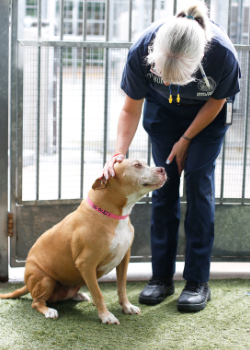
Those who have specific training goals may also consider seeking out recommendations from others who share their canine related interests. It is important to note that not all dog trainers teach only basic obedience and manners. There are also dog trainers who train dogs for other avenues such as the show ring, flyball, agility, competitive obedience, disk dogs or dock dogs. Dog owners who have an interest in these types of activities will likely find asking other dogs owners who have dogs who excel in these activities for recommendations for a trainer is an excellent idea to find a well qualified trainer. This can be accomplished in a number of ways. The dog owner may begin attending these competitions to meet others who share their interests. Once they get to know these other dog owners and their dogs, they can decide which ones they wish to ask for recommendations. Some of the competitors may have trained their dog on their own and may be willing to offer you some training advice while others may have relied on the assistance of a professional trainer and can offer you a recommendation for the trainer they used as well as an honest opinion about this trainer’s abilities and qualifications.
Finally, dog owners who are looking for a good dog trainer may want to meet with and interviewing several different dog trainers. You can start off by simply looking up dog trainers in a local phone book or through an online resource. If the dog trainer has a website, you can learn more about him which will help you to determine whether or not you believe he will be a good match for you and your dog. If you decide to meet with a particular trainer, you can ask him more specific questions about his qualifications, past experiences and training techniques. The answers to these questions as well as your overall impression of the dog trainer can aid you in the decision making process.
Separation Anxiety
Out Of Sight, But Not Out Of Mind
By Brenda Barnette
One of the concerns people most often mention about their pets-especially dogs-is something the experts call “separation anxiety.” That’s a big term that means your dog found creative ways to let you know she didn’t like the fact that you left her. She could chew up something that is not her toy or she might bark until the neighbors call the police. In extreme cases, she may soil your bed or favorite chair. None of these behaviors typically inspires we humans to be patient, loving and gentle. However, your furry family member is frightened and totally distressed if she is having these behaviors. She would never disappoint you on purpose. If you are fortunate to be able to have your dog with you most of the time, separation anxiety dogs are totally devoted companions.
For more severe cases, you may consult an animal behaviorist. An excellent resource is the Program for Companion Animal Behavior at UC Davis College of Veterinary Medicine .
Avoid any trainer who recommends rough handling or aversive treatment. Trust your expert, and give it time! Your dog will repay you with a lifetime of unconditional love and acceptance.
Remedies
For simple cases of separation anxiety, you may try these remedies:
-
- Take your dog out for a long walk, a run or a playful romp in the morning and evening. This will leave her feeling more content and relaxed.
- Your animal knows the departure clues when you put on your shoes, turn off the TV, and grab your keys and briefcase on your way out. Try putting your keys in your pocket an hour before you leave. Put on your shoes and pick up your bag and walk back to your favorite chair and sit down.
- Un-condition your dog to know you are leaving by changing your predictable patterns. When it’s time to leave, just leave quietly.
- No hugs and kisses, or regretful “Good Byes.” These clues might make your pet feel more anxious. Ignore your animal for about 15 minutes before you leave. And then just leave.
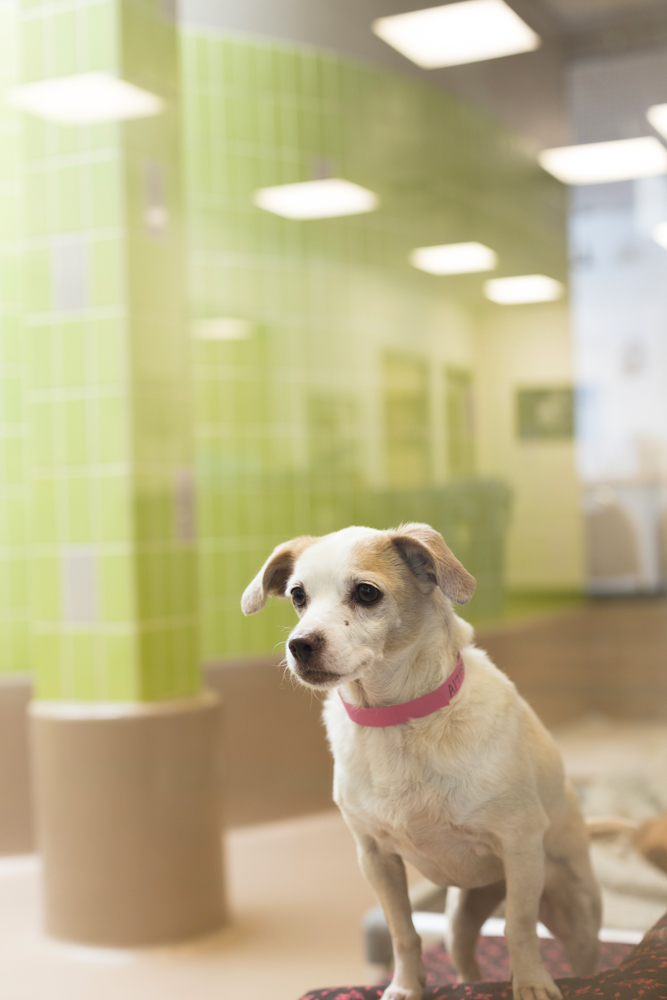
- Prepare a special treat to stuff into a rubber snack toy you can buy at a pet store. Fill it with cheese, peanut butter, beef jerky or anything she really likes. Give her the special “Good Bye” stuffed toy when you leave and then be sure to pick up and put the treats away when you get home. Food-motivated animals will focus on the special treat items and not on your departure. You can even freeze rubber snack toys to make them last longer.
- Create a safe, secure room or space for your dog while you are away. Include their bedding and favorite toys, and provide some normal household sounds by playing a radio or tape of voices and music. Use this room to practice departures and quick returns, with rewards for appropriate behavior, to help condition them to stay calm. DO NOT begin crate training while a dog is still insecure. The benefits of crate training will be discussed in a future column.
- Sometimes a second furry family member can provide both pets with the security and companionship of a good buddy during the day. Be sure to involve your current pet in the selection process for a good match.
Handouts for You and Your New Cat
5 Steps to Creating a Cat-Friendly Home
Helping a Shy Cat Adjust to a New Home
How to Introduce Cats
How to Help Cats Get Along
Play-Induced Overstimulation in Cats
Petting-Induced Overstimulation in Cats
Cats That Hide in the Home
How to Help Your Cat Become More Affectionate & The Talkative Cat
Kitten Handouts
Kitten Care Handbook
Flyer: Found Kittens and How YOU can Help Them
The Cat Conspiracy Unveiled
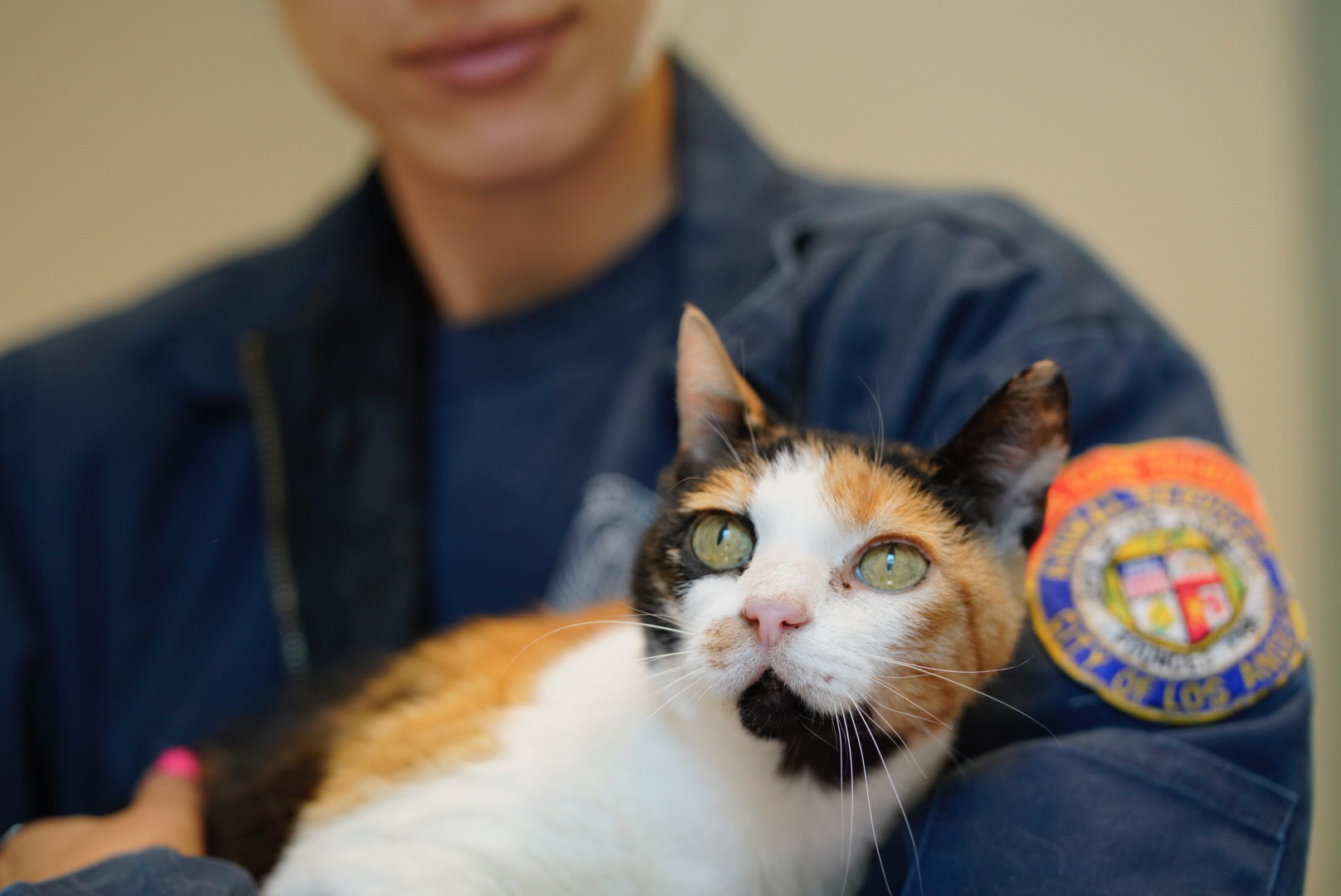
By Brenda Barnette
Sleep.Eat.Clean My Face.Potty Box.Scratch Something.Find The Sun.Sleep.Eat.Clean My Face.Potty Box.Sleep. Another day in the life of an undercover cat!
Cats may truly be the smartest animals. They are so intelligent that they have convinced many people that they are totally untrainable. Little is really ever expected of a cat other than using a litter box and occasionally coming when called, especially if tasty cat food is being served.
We all know that cats don’t like to be told what to do, they like to figure things out for themselves. So it’s time to reveal the secret to getting these little geniuses off the couch to demonstrate the power locked in their brains.
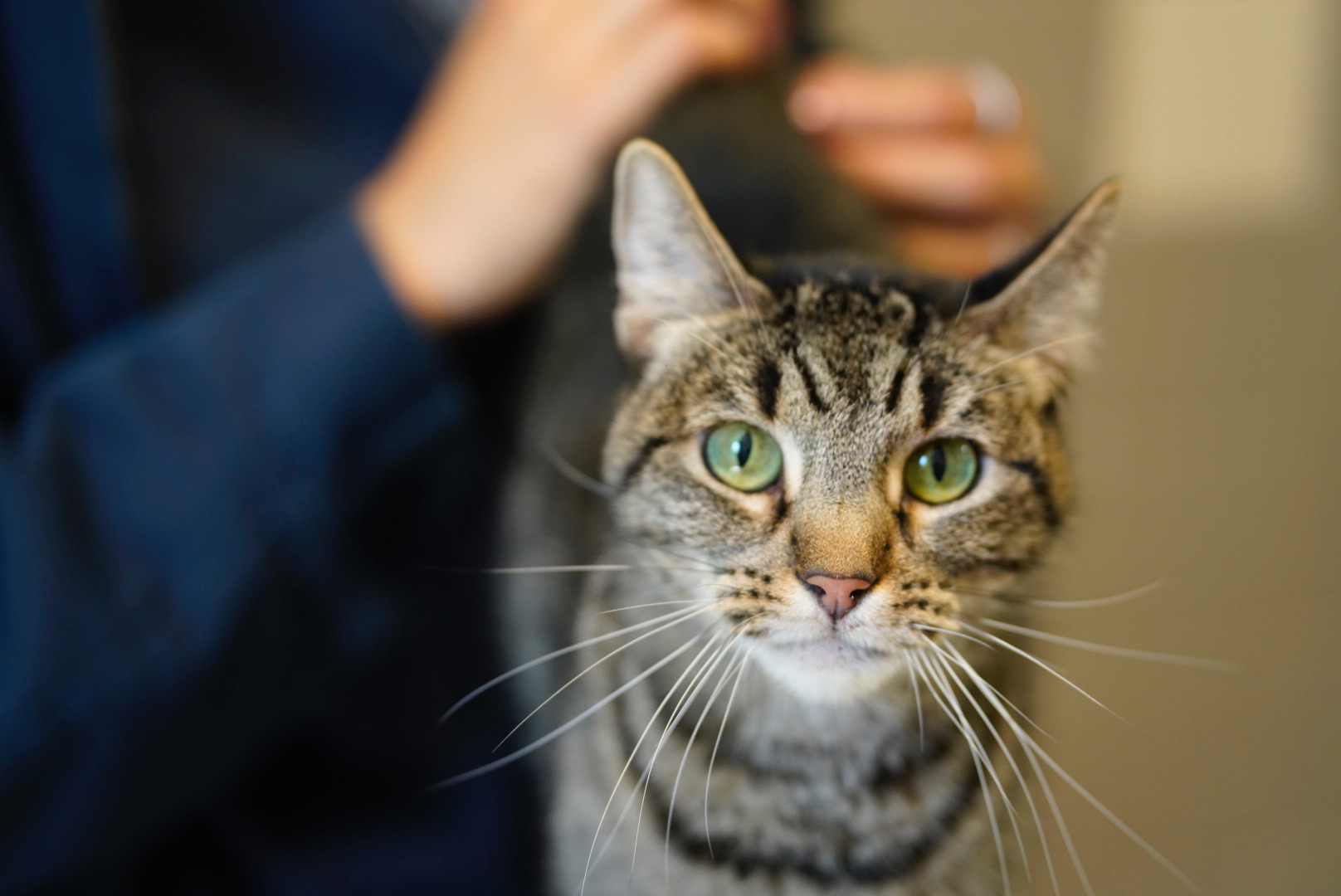 First, obtain a toy metal clicker that produces a double-click sound when you depress & release it. Clickers produce a distinctive, consistent sound, while your voice (well lets face it) chatters on with your cat all day and your cat does not know the difference between your rewarding voice and your views on life.
First, obtain a toy metal clicker that produces a double-click sound when you depress & release it. Clickers produce a distinctive, consistent sound, while your voice (well lets face it) chatters on with your cat all day and your cat does not know the difference between your rewarding voice and your views on life.
Second, determine your cat’s favorite treat – chopped chicken, cheese or tuna. Then combine the clicking sound with a treat. The idea is to get your cat to associate the clicking sound/behavior with a treat.
Timing of rewards is critical. Click first, then drop the treat in front of the cat. Click & Treat is the key. Choose one exercise at a time. Click and treat your cat for coming or sitting or fetching (really!); for finding the potty box and the right place to scratch.
Try to do this exercise several times a week and watch for the time when the cat associates the sound of the clicker with getting a treat. Keep sessions regular but short. When the cat buys into the game plan, then you can add a word or a gesture to indicate the learned movement that receives a treat.
From your cat’s perspective, it is training you to click the clicker and provide great treats, entertainment and unwavering admiration.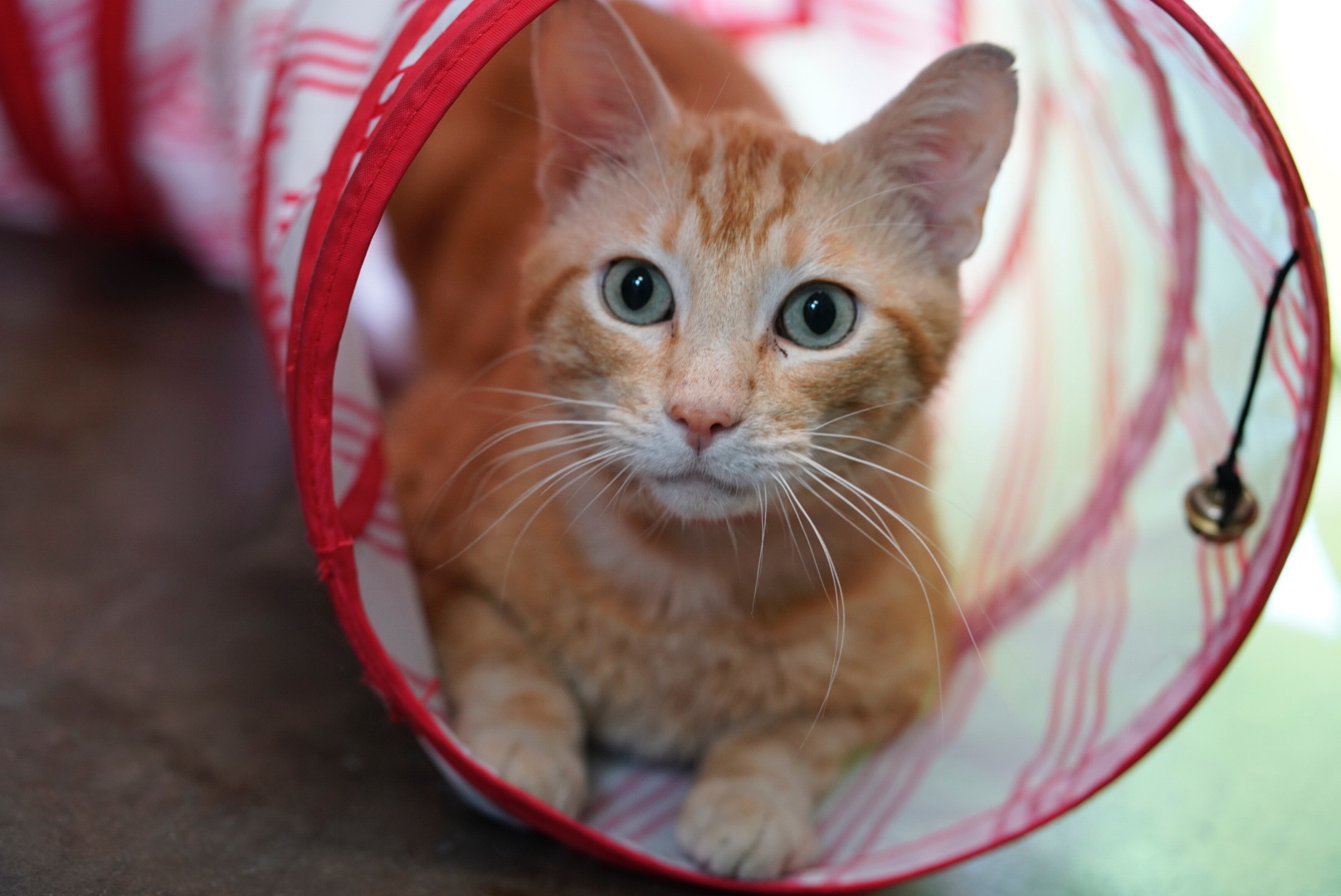
Grooming your Cat
Most cats do not need to be bathed, but if they will let you do it, you can try. As with dogs, avoid getting water in their ears and soap in their eyes. Make sure you use a shampoo specifically formulated for cats as their skin has a different pH than a dog’s skin.
Adopting
Rabbits are often known affectionately by the pet name bunny or bunny rabbit , especially when referring to young, domesticated rabbits. A healthy indoor pet rabbit can live up to 10 years and longer. They enjoy throwing around toys and chewing on cardboard. In some home environments, they can develop an affinity with cats and even dogs. Though they are often caged in small areas, they can be trained to live as free-roaming pets, similar to cats and dogs. As pet rabbit medicine, diet and living environment improves, the rabbit’s life span increases.
More Information
Rabbits make wonderful animal companions in the home. But contrary to common belief, they are not “low maintenance” pets. Please read this care sheet to learn the basics before you decide to adopt a rabbit!

Click here to view LA Animal Services Rabbit Care Guide (PDF)
Click here to view LA Animal Services Rabbit Care Guide in Spanish (PDF)
What is Rabbit Hemorrhagic Disease Virus (RHDV)? (PDF)
Creating a Fear Free Home for Your Rabbit (Slides)
Neuter Your Bunny! – Neutering not only helps curb overpopulation of domestic rabbits, it dramatically decreases the chance of reproductive cancers, makes litter box training easier, and reduces chewing and territorial behavior, such as spraying. Shelter rabbits that are not already neutered should be neutered IMMEDIATELY. See our list of Los Angeles area veterinarians who offer relatively safe, low-cost neuters for rabbits.
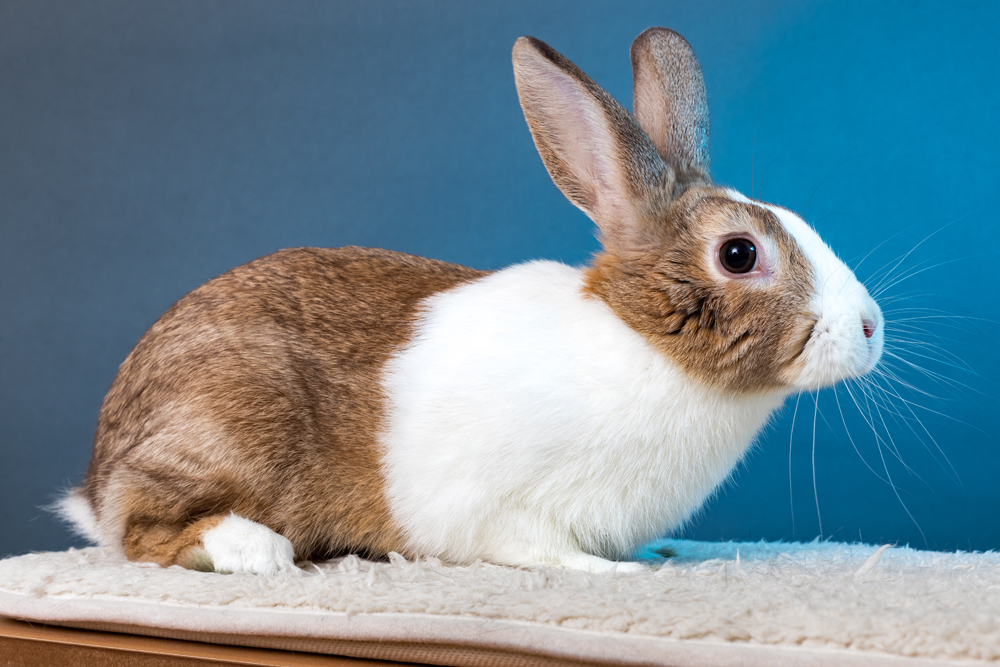 Litter box Training – Most rabbits can be litter-trained and allowed supervised freedom in the house. Start with a large cat litter box; put newspaper and/or rabbit-safe litter on the bottom and cover it with lots of fresh timothy or oat hay. Since a rabbit usually urinates in one corner of his space, this is where you place the litter box. Once the bunny uses the box reliably, you can let him out into a larger area, putting out a second box. Keep bunny confined to a 4′ x 4′ space until he is very good with his box.
Litter box Training – Most rabbits can be litter-trained and allowed supervised freedom in the house. Start with a large cat litter box; put newspaper and/or rabbit-safe litter on the bottom and cover it with lots of fresh timothy or oat hay. Since a rabbit usually urinates in one corner of his space, this is where you place the litter box. Once the bunny uses the box reliably, you can let him out into a larger area, putting out a second box. Keep bunny confined to a 4′ x 4′ space until he is very good with his box.
Handling – Handle with care! Rabbits have fragile skeletons and can be seriously injured if dropped or allowed to fall. When picked up, a scared rabbit may kick out with her powerful hind legs and fall to the floor, breaking her back. A child struggling to hold a wiggly bunny could be badly scratched or bitten and the rabbit injured. For this reason and others, children should always be supervised with rabbits. Also, because rabbits are prey animals, they would rather not be picked up, but prefer that you meet them at their level and pet them on the floor. To pick up a rabbit correctly, place one hand under the rabbit behind the front legs and the other hand just above the bunny’s tail. Hug the rabbit against your body firmly but gently.
NEVER pick up a rabbit by the ears-this is very painful and can cause permanent injury.
Never chase your rabbit, use force or yell-that will only teach her to fear you. Always be sensitive and gentle with your rabbit!
Diet – Your rabbit’s diet should include lots of fresh hay (timothy or oat for adults; alfalfa hay for babies), plain commercial rabbit pellets (no nuts, seeds, etc.) and fresh, washed vegetables and leafy greens. Romaine lettuce, carrot tops, dandelions, parsley, radish leaves, broccoli leaves, and cilantro are all good. Treats include small slices of apple, pear or other fruit, or pieces of carrot. Do not feed human treats like crackers and cookies. Fresh water should be available at all times in a bowl or a water bottle. Please note: Rabbit digestion is very sensitive, so you must introduce new foods gradually. Young rabbits age 3 months and under should only be fed hay, rabbit pellets, and water, and NO FRUIT.
Location – Rabbits do not tolerate heat, dampness, or drafts. Your rabbit should be in a quiet, safe location close enough to human activity so she doesn’t become lonely.
Indoor Housing – Secure puppy or rabbit pens 30-36″ tall are best for indoor “starter” housing. If bunny jumps out, you can clip a sheet across the top of the pen for a couple of weeks until she establishes boundaries. You can put linoleum or plastic chair mats over your carpet or flooring during “potty training” and to prevent bunny from chewing or digging the carpet. If you must cage your bunny, the cage should measure a minimum of 2′ x 4′ per rabbit, and the rabbit must get daily exercise time. The cage should allow adequate ventilation (no aquariums!). Rabbits need a solid surface, such as a board, in part of their enclosure to prevent foot sores and discomfort from standing or resting on wire mesh. Caged rabbits should have a nest box for hiding.
Indoor Bunny-Proofing – Cover phone and electrical cords in plastic tubing (consult a hardware store). Don’t let rabbits chew rugs or carpets; they can ingest fibers. Keep the floor clear of anything that can harm your bunny, including but not limited to: houseplants, candles, staples, and children’s toys. Young bunnies usually want to chew, dig, and get into trouble. The good news: once your bunny is past adolescence, she will calm down
Outdoor Housing – …is not recommended. Rabbits are prone to heat stroke (anything over 85 degrees is life-threatening) and can be killed by raccoons, hawks, dogs, feral cats, fly strike and other predators. Rabbits are great escape artists: they can burrow under backyard fences or squeeze out of very small openings, never to be seen again. If your rabbit must live outdoors in a large hutch or condo be sure he is off the ground, sheltered, and in the shade. Hutches should be a minimum of 2′ x 4′ per rabbit, and securely fastened with locks at the door and roof to protect bunnies against raccoon attacks. Outdoor housing must be enclosed on all sides-no open tops or dirt floors!
Exercise – If your bunny lives in a pen while you are at work, she will need “run time” several hours each day out of the pen, in a bunny-proofed room or hallway. Rabbits do not require outdoor exercise; if allowed outdoors, your rabbit must be in a predator-safe enclosure covered on all sides, and in the shade. Hutched bunnies also need supervised exercise time.
A Honey for Your Bunny – Rabbits are herd animals and like to have friends of the same species. If you’re away all day at work, consider getting your rabbit a bunny friend for companionship. Neutered boy-girl pairs get along best, although neutered littermates of the same gender often stay friends. Bunny matchmaking can be dangerous, so always consult with a rabbit rescue group for tips on bonding, before you pone rabbit into another rabbit’s territory.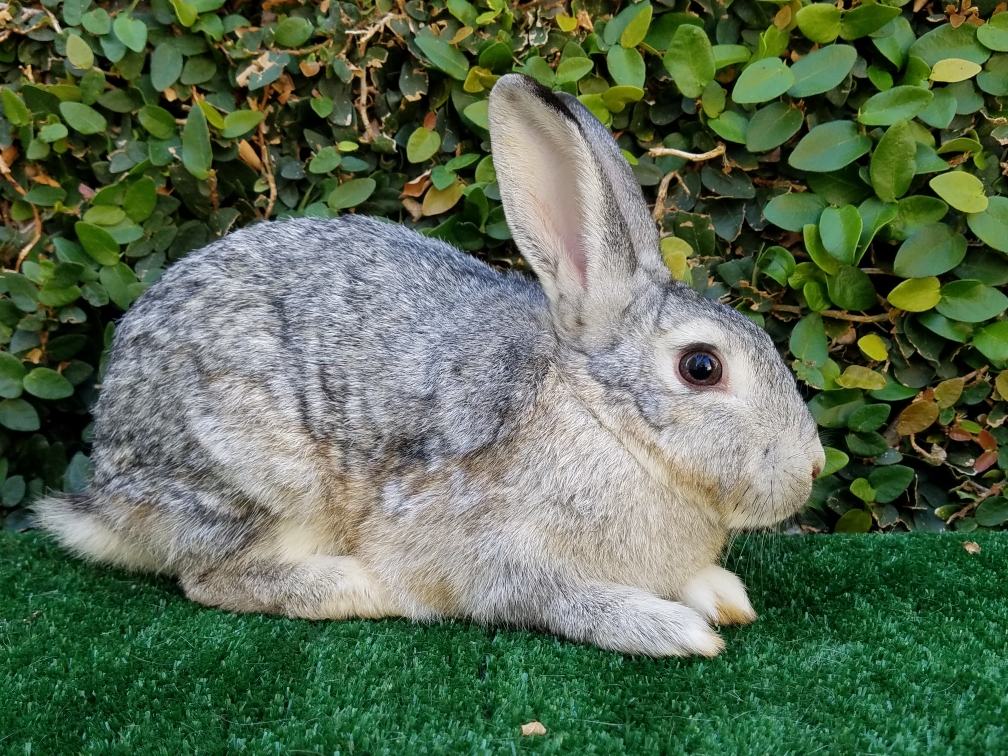
Never Put Un-neutered Rabbits Together – Adult males will fight; adult females will fight; one of each will lead to an unwanted pregnancy.
Dogs, Cats and Other Animals – Never expect a dog, cat, or other animal to behave around a rabbit. Gentle, indoor cats usually work out a good relationship with rabbits, but the introduction must be slow and supervised. Dogs must be quiet, obedience-trained, and well behaved for them to have a safe relationship with a rabbit. Most dogs cannot be left alone with a rabbit. The mere sight of a ferret or snake can cause a rabbit to have a heart attack. Always carefully supervise and protect your rabbit from other animals!
Veterinary Care – Finding a veterinarian who specializes in rabbits and knows how to treat them can be difficult. Consult a rabbit volunteer or go to www.rabbit.org for a referral. Be aware that rabbit veterinary care can be expensive.
Medical Emergencies – Rush your rabbit to the vet if you see: lack of appetite; diarrhea; few or no fecal pellets; listlessness; crusty ears; overgrown teeth, mucus around the eyes or nose; urine-soaked fur, straining to urinate; lump or swellings; head tilt; or any sudden behavior change. Rabbits don’t show illness like cats and dogs, so any perceived problem should be treated as an emergency. One skipped meal could mean your rabbit is in grave danger.
Grooming – Trim rabbit nails, front and back, every six to eight weeks. Comb your bunny gently with a fine-toothed flea comb about once a week – more if he is shedding, to prevent fur balls. Rabbits cannot cough up fur balls like a cat. If your bunny gets fleas, carefully groom with flea comb, dipping it in soapy water as needed. “Advantage” (but not necessarily other, similar products) has been used on rabbits with success; follow directions and keep bunnies separate until completely absorbed. NEVER use a flea dip or a flea collar-these are toxic to rabbits. Rabbits are clean animals and should generally not be bathed. Rough fur, “dandruff,” or loss of fur can mean fur mites or ringworm – see your vet, as these conditions can easily be treated with medication.
What to Buy
- Exercise pen, baby gate/pen or predator-proof housing
- Hard plastic carrier for emergencies, trips to the vet
- Heavy crocks for food and water
- Wooden box or cardboard house to play and hide in
- Hamster brush, kitten flea comb, nail trimmers
- First aid kit (consult with a rabbit-savvy veterinarian
- Hay (from a feed or pet store), veggies, pellets
- Bulk white vinegar to clean the litter box
- Toys (from a rabbit supply company)
- Hand broom and dustpan; dust vacuum
Regular veterinary care and vaccinations are important to keep your companion animals healthy. You will want to visit veterinary offices and decide who your best friend’s doctor is going to be before he or she gets sick. Ask your friends who have pets for a recommendation. Look for an office that is clean and smells good, the receptionist and staff are welcoming. Make an appointment to see the entire clinic and to meet the veterinarian. If you are uncomfortable for any reason, find another veterinarian.
If you’re considering pet insurance, check out ConsumersAdvocate.org’s list of the 10 Best Pet Insurance of 2018.
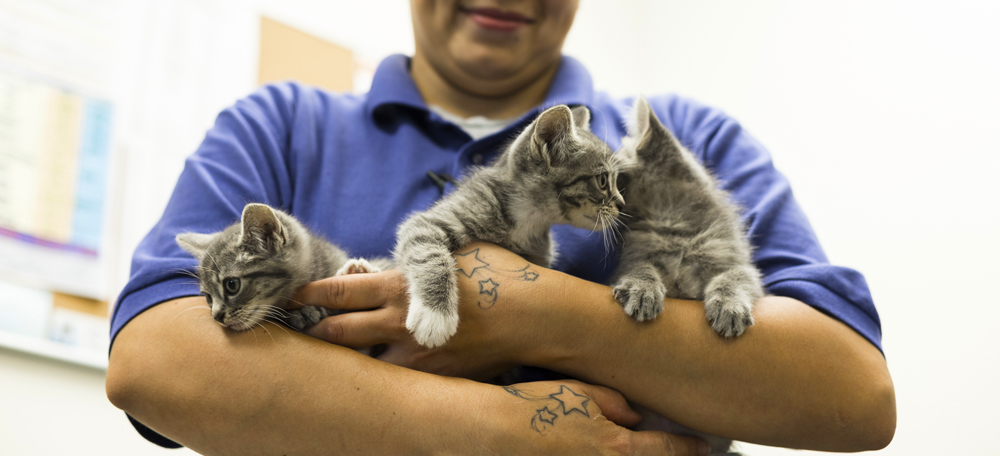
Basic Grooming Tips:
Brush your dog or cat every day to keep his/her coat in the best condition. Regular brushing loosens dirt, prevents matting, and distributes the natural oils in your companion animal’s coat giving it a healthy sheen.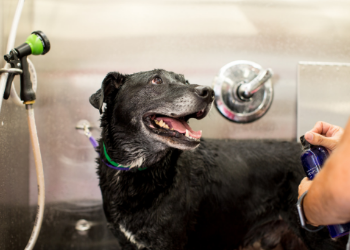
Cut your dog or cat’s nails at least once a month. If you don’t feel confident enough to do it yourself, many groomers and vets will do it for you for a nominal fee. You will need a guillotine-style clipper for best results. Do not use human nail clippers or scissors as you may end up crushing or splintering your companion animal’s nail. Take your companion animal’s paw and with gentle pressure, push on the paw pad to force the nail to extend slightly. Clip the nail slightly avoiding the quick. The quick is the part of the nail that contains the nerves and blood vessels. If can not see the quick, stop cutting at the point where the nail begins to curve. If you do cut the quick, don’t panic. Dab a cotton swab in some clotting powder and press it firmly on the nail for several seconds. Don’t forget to trim the dew claw which is located just inside of each front paw.
Clean your companion animal’s ears at least two times per month. The skin inside the ear flaps should be pale pink. If there is a bad odor and/or any red, brown, or black skin, you should have a veterinarian examine your companion animal’s ears. Use a cotton ball moistened with baby oil or warm water to gently wipe the opening to the ear canal and ear flaps. Do not stick anything into the ear canal.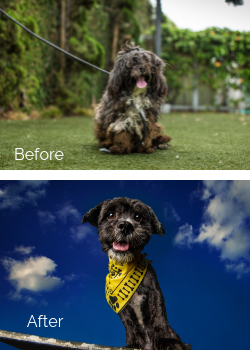 Brush your companion animal’s teeth. Companion animals can get cavities too! Companion animal supply stores sell toothpaste with a small rubber “toothbrush” for cats and dogs that you put on you finger and use to massage your companion animal’s teeth. You can also use a small soft child’s toothbrush.>
Brush your companion animal’s teeth. Companion animals can get cavities too! Companion animal supply stores sell toothpaste with a small rubber “toothbrush” for cats and dogs that you put on you finger and use to massage your companion animal’s teeth. You can also use a small soft child’s toothbrush.>
Wash your companion animal. Wash your dog every two to three months or as often as needed. Be sure to brush him before the bath to remove mats from his coat. Place cotton balls in your dog’s ear to prevent water from running into his ear canals. Wash your dog with warm water and avoid getting soap in his eyes. Never spray him in the face with water. Massage companion animal shampoo into your dog’s coat following the manufacturer’s directions, moving from the head to the tail. Rinse with warm water and dry him with a soft towel or a hair dryer on low power.
Going on vacation? Your companion animal can be a great travel companion on a trip. Preparing to move? Your furry friend will acclimate to a new home if he is with you. You will need to do some planning ahead to make it a safe journey for you and your four legged family members.
Pet Travel Planning Information
